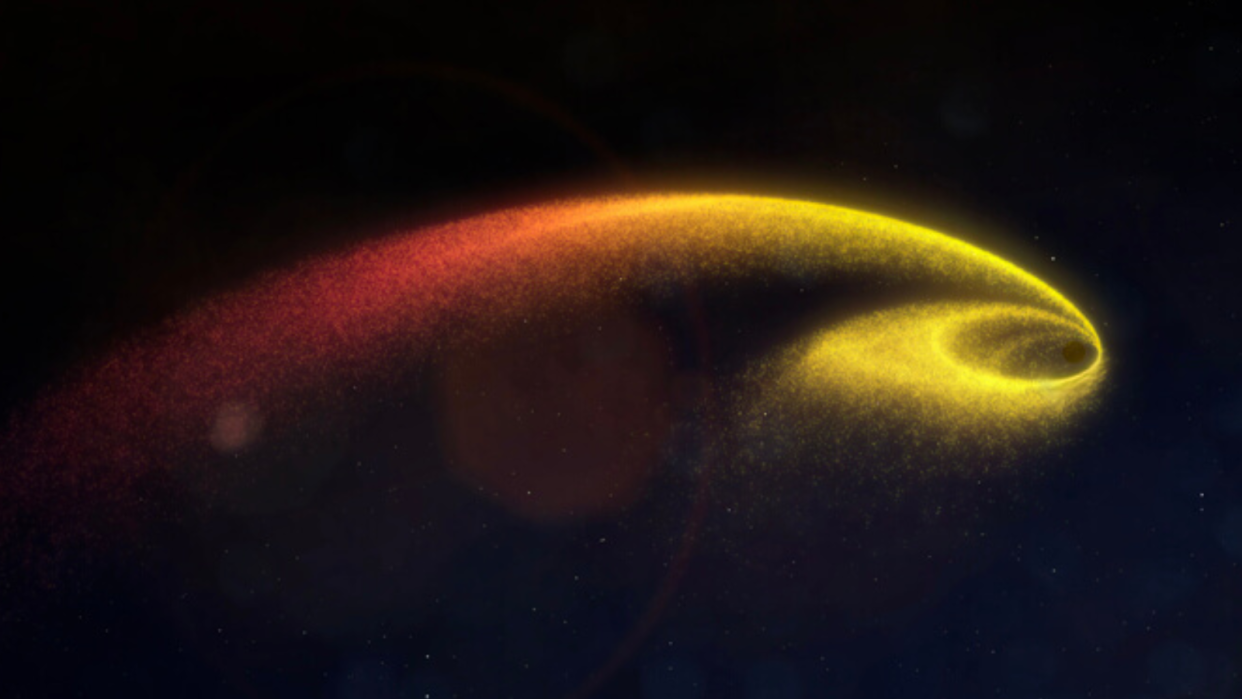Scientists find black hole spaghettifying star remarkably close to Earth

Astronomers have spotted the closest visible-light example yet of a supermassive black hole ripping apart and devouring a star.
This star's gory death can be blamed on a black hole with a mass equal to around one million suns; the event occurred in the active star-birthing galaxy NGC 3799, which is located about 160 million light-years from Earth in the constellation of Leo.
The scientists, who hail from the University of Hawaii Institute for Astronomy, discovered the stellar murder, referred to as a tidal disruption event, or TDE, when they spotted the sudden brightening and rapid fading of the barred spiral galaxy within which it occurred. The discovery was made with the All-Sky Automated Survey for SuperNovae (ASAS-SN) system on Feb. 22, 2023.
"While black holes destroying stars have been seen before, this is the first one we have seen this close using visible light," Willem Hoogendam, IfA graduate student and research co-leader, said in a statement. "This could give us a much better understanding of how supermassive black holes grow and collect material around them."
Related: Astronomers witness 18 ravenous black holes ripping up and devouring stars
Stellar pomodoro
TDEs occur when stars venture too close to supermassive black holes, which dwell at the hearts of all large galaxies and have masses equal to millions, or even billions, of suns.
The immense gravitational forces of these monstrous black holes generate huge tidal forces that squeeze the doomed stars horizontally while also stretching them vertically. This turns the stars into cosmic noodles of stellar material that wrap around supermassive black holes like spaghetti on a fork. After this process, aptly called "spaghettification," each destroyed star is gradually fed to the supermassive black hole. This violent process generates extremely bright flares that can be seen with instruments here on Earth.
Though these events are fairly common, finding TDEs relatively close to Earth in this manner is rare. That makes the TDE in NGC 3799, designated ASASSN-23bd, a prime target for follow-up investigations.
"This discovery suggests that black holes ripping stars apart nearby could be more common than previously thought — we just haven’t witnessed it happening frequently," Hoogendam.
The team followed up their initial observations of the TDE in NGC 3799 with more observations using ground- and space-based observatories, including the IfA’s Asteroid Terrestrial Last Alert System (ATLAS) telescopes on the Hawaiian mountains of Maunaloa and Haleakalā as well as the W.M. Keck Observatory on Maunakea.
The team discovered that ASASSN-23bd is remarkable among TDEs for reasons other than its proximity to Earth.
This TDE brightened over the course of just 15 days and then rapidly dimmed, making it around twice as fast as other TDEs. Additionally, it produced much less energy than other TDES. This marks it out as part of a category of events called "low luminosity and fast TDEs."
Related stories:
— Black hole announces itself to astronomers by violently ripping apart a star
— Record breaker! Newfound black hole is closest known to Earth
— NASA X-ray observatory reveals how black holes swallow stars and spit out matter
The team's ASASSN-23bd findings are set to be published in the Monthly Notices of the Royal Astronomical Society.
